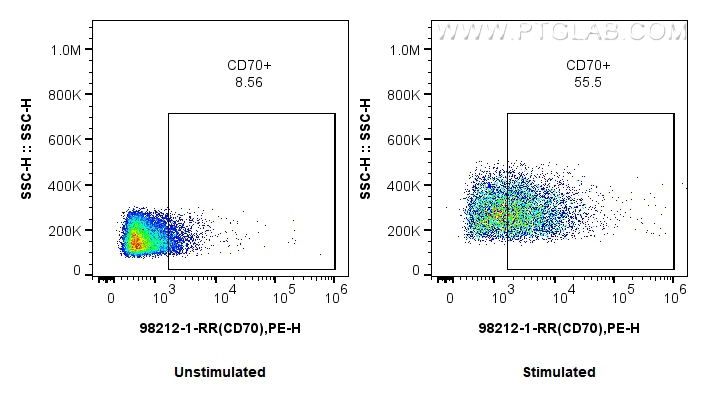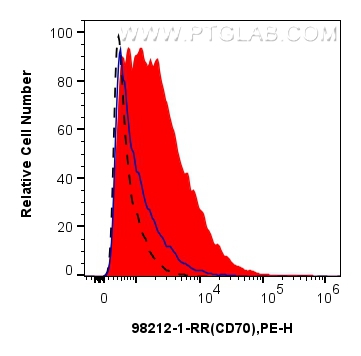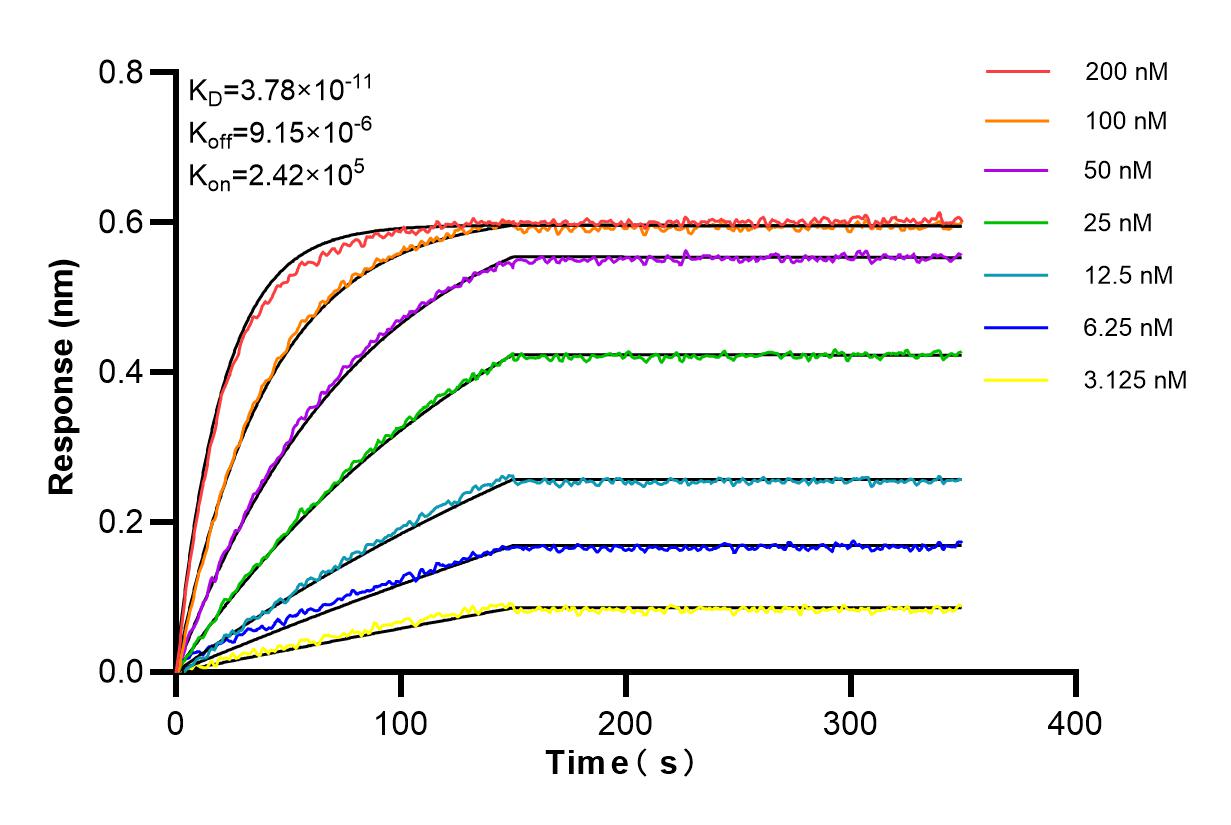验证数据展示
经过测试的应用
| Positive FC detected in | LPS treated mouse splenic leukocytes |
推荐稀释比
| 应用 | 推荐稀释比 |
|---|---|
| Flow Cytometry (FC) | FC : 0.25 ug per 10^6 cells in 100 μl suspension |
| This reagent has been tested for flow cytometric analysis. It is recommended that this reagent should be titrated in each testing system to obtain optimal results. | |
| Sample-dependent, Check data in validation data gallery. | |
产品信息
98212-1-RR targets CD70 in FC applications and shows reactivity with mouse samples.
| 经测试应用 | FC Application Description |
| 经测试反应性 | mouse |
| 免疫原 | CD70 fusion protein Eg1294 种属同源性预测 |
| 宿主/亚型 | Rabbit / IgG |
| 抗体类别 | Recombinant |
| 产品类型 | Antibody |
| 全称 | CD70 antigen |
| 别名 | 241553F2 |
| 计算分子量 | 22 kDa |
| GenBank蛋白编号 | NM_011617.2 |
| 基因名称 | Cd70 |
| Gene ID (NCBI) | 21948 |
| 偶联类型 | Unconjugated |
| 形式 | Liquid |
| 纯化方式 | Protein A purfication |
| UNIPROT ID | O55237 |
| 储存缓冲液 | PBS with 0.09% sodium azide, pH 7.3. |
| 储存条件 | Store at 2 - 8°C. Stable for one year after shipment. |
背景介绍
CD70, also known as tumor necrosis factor ligand superfamily member 7 (TNFSF7) or CD27 ligand (CD27L), is a transmembrane protein that plays a significant role in the immune system. It is the unique ligand for CD27, a member of the tumor necrosis factor receptor (TNFR) family, and is transiently upregulated upon stimulation of immune cells. CD70 is expressed on lymphocytes and dendritic cells, and its expression can be regulated by activation signals received via toll-like receptors (TLRs), CD40, and the antigen receptor MHC II. It provides complex and not completely understood signaling for B cell development. CD70 is also expressed on various solid tumors and hematolymphoid malignancies, where it may contribute to a poor prognosis. (PMID: 34991665; 26213107; 26098609)
实验方案
| Product Specific Protocols | |
|---|---|
| FC protocol for CD70 antibody 98212-1-RR | Download protocol |
| Standard Protocols | |
|---|---|
| Click here to view our Standard Protocols |


